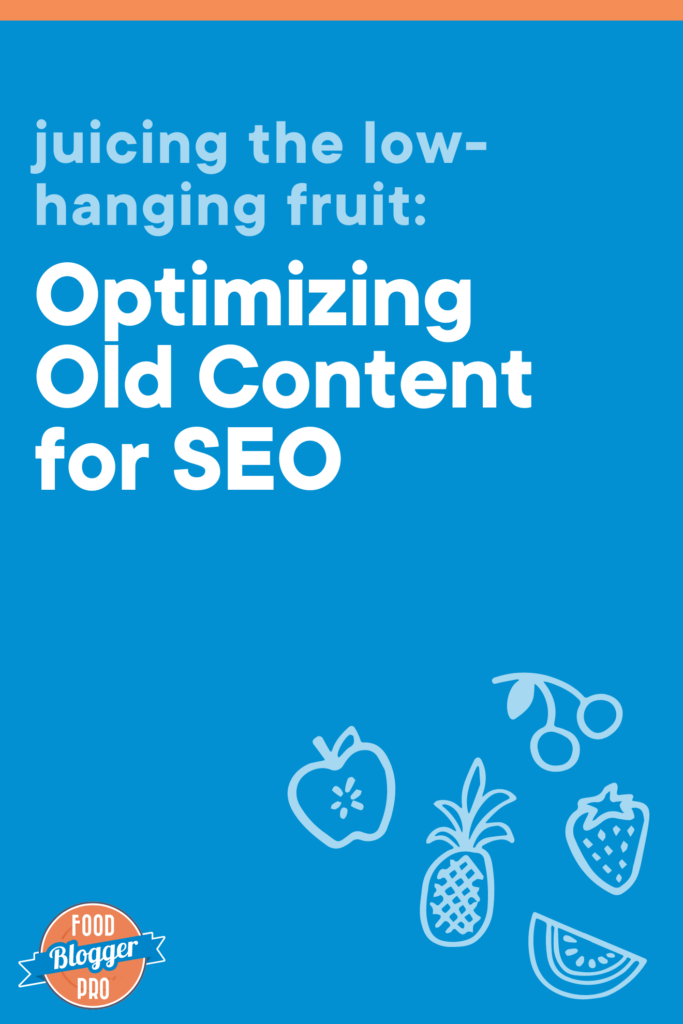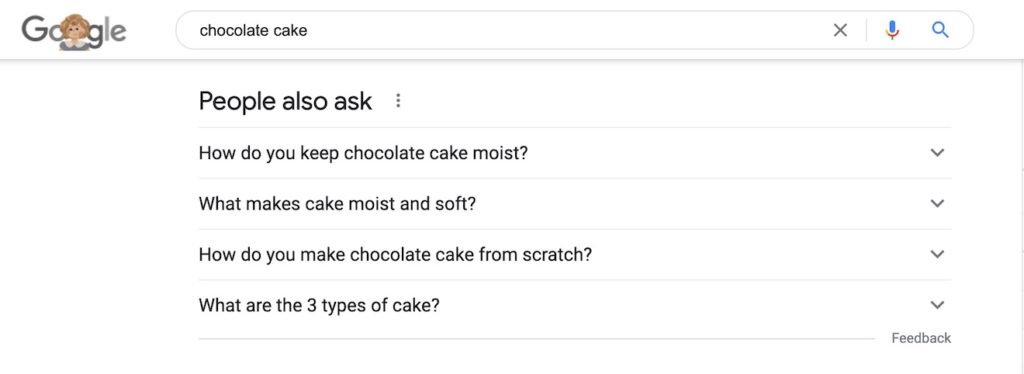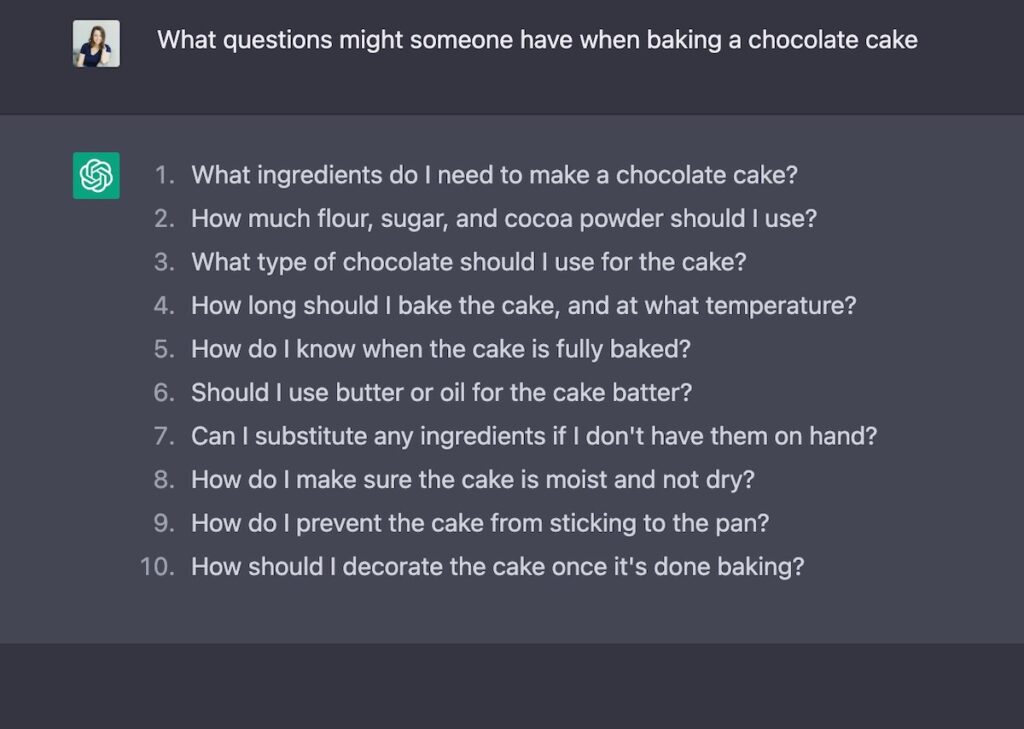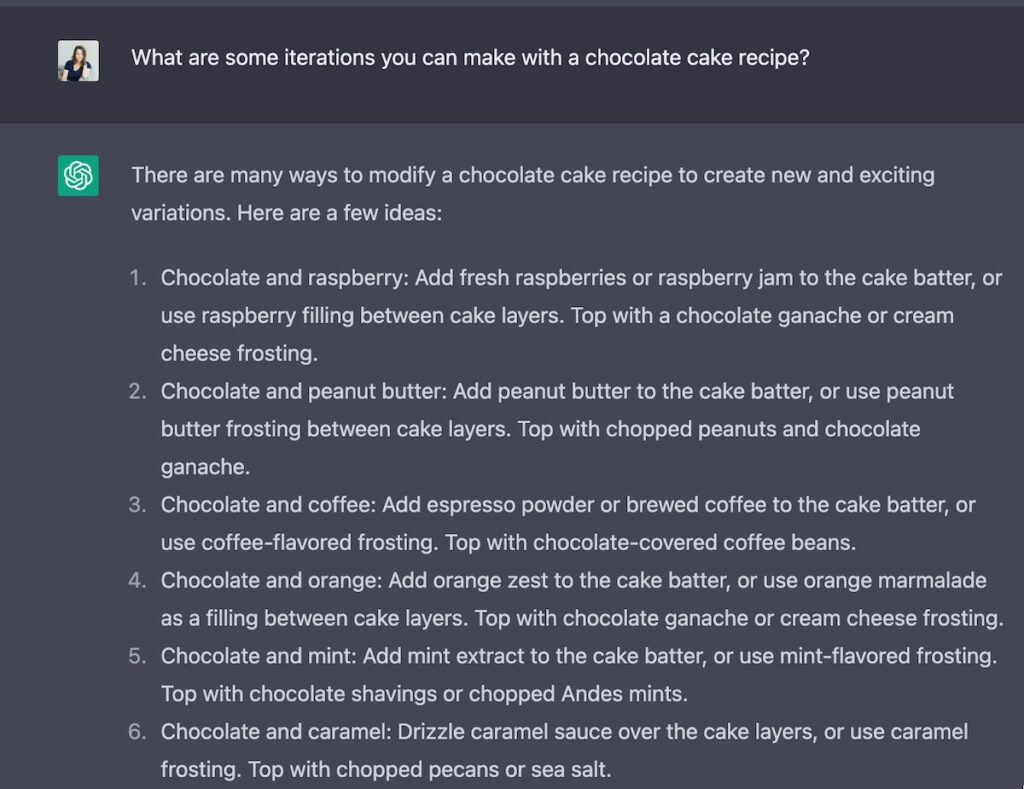When you think about SEO, how do you feel?
A. 😬
B. 😭
C. 😱
D. All of the above
It’s 100% okay and normal to pick any of these options (especially the last one) when you’re optimizing your content for SEO. But it really doesn’t have to be that way.
As you probably know, “SEO” stands for search engine optimization. That means that there are things you can be doing to your posts to optimize them for search results. So if a post is better optimized, there’s a greater chance for it to show up higher in search results.
SEO isn’t a one-and-done kind of thing though; there are a ton of different tips and tweaks that you can apply to your blog posts to help you get more traffic (and in turn more email subscribers, higher ad revenue, additional social media followers, and all of the other positive outcomes that can result from more people visiting your site).
And I’m not just talking about new posts; you can actually improve the existing posts on your site. We like to call this “juicing the low-hanging fruit” because you’re addressing content you’ve already created and just making it a tiny bit better. And that’s what we’re focusing on today.

It may seem overwhelming to implement all of these different SEO strategies, especially when you’re trying to balance creating awesome content and optimizing it in a way that Google rewards (more on that in a bit).
But it’s important to remember that you’ve already done the hard part. You’ve created content, photographed recipes, and started to grow your audience. Now it’s time to juice the low-hanging fruit on your blog and make sure that your posts are optimized (but not too optimized) for search.
So how do you do that? Let’s discuss:
Step 1. Figure out what’s missing in your older content
Yep, I’m talking about auditing your existing content to see where there are shortcomings. Some questions to consider are:
Are your image file names descriptive?
Image names are searchable by Google and may appear in search results if they’re descriptive and keyword-rich. So an image name like fruit-pizza.jpg says a lot more about what’s in the actual photo than something like img-1203.jpg, and your fruit-pizza.jpg image may show up in search results for “fruit pizza.”
Speaking of images, do they all have alt text?
Not only does alt text help those using screen readers, it also tells search engines (like Google) what’s in your images.

How about Pinterest Text?
This is the description that contributes to “Pinterest SEO.” Even though the Pin Description won’t display on your pins, it’s important to provide one and make it as descriptive as possible.
Do your posts have descriptive meta descriptions?
Meta descriptions suggestion you’re giving to Google for what to display in a search result.
Ideally, Google will show this description in search results, but Google does what it wants and will sometimes pull other information from the blog post like ingredients or the first few lines of the post.
The meta description should describe the recipe, include your keyword, and entice the reader to click on the result.
Do your posts exemplify E-E-A-T?
E-E-A-T is a very on-brand and important topic for food bloggers to understand; it stands for experience, expertise, authoritativeness, and trustworthiness, and sites that have high levels of E-E-A-T are seen as high-quality resources and create a more well-rounded, future-proofed site.
Are all paid links marked as nofollow or sponsored?
You want to make sure to tell Google that an external link is paid for so that it doesn’t contribute to that site’s PageRank. Just a way to stay on Google’s good side.
Have you optimized your internal links and external links?
The link text for your internal and external links should have descriptive link text and include a keyword if it makes sense.
A descriptive link looks like this:

It tells the reader exactly what they’ll see when they click on the link!
Do you have any broken links?
When the Google bot crawls a website and it comes across a broken link, the crawl is interrupted. Broken links also negatively impact your site’s “user experience,” because a link that a reader wants to visit isn’t correct and leads to a 404 page.
You can install the Broken Link Checker plugin or use a tool like Clariti to help you identify (and fix!) those pesky broken links.
Are you using a solid recipe plugin?
While recipe plugins make your recipes eye-catching for your readers, for those who have WordPress sites, they also send important information to search engines.
Is your recipe card complete?
Sometimes it doesn’t make sense to fill out every section of a recipe card, or it might be an intentional choice to omit something (for example, some bloggers choose not to include nutrition information), but in general, you’ll want to fill out all fields that are available in a recipe plugin
Are you answering some of the questions your readers may have about the recipe?
Using tools like the Yoast FAQ block allow you to add special markup to the questions and answers in your blog posts for Google. Not only will the information within your FAQ block help your readers with answers to their questions, your FAQs could also end up as a rich result in the People Also Ask box within a Google search:

You could also use a top-of-mind tool to help you figure out some questions your readers may have when making your recipe: ChatGPT! Here’s an example:

You can also use ChatGPT to help you think of different ways your readers may want to customize your recipes:

Last but not least, you can optimize for keywords. Check out this podcast episode with Aleka from Keywords with Aleka for more information on keyword research for food bloggers.
How to actually implement and track those updates
Once you audit your content, you can manually go through it all to track your fixes in something like a spreadsheet, but you can also use tools to make the process a bit easier. We recommend checking out:
- Clariti* –– A tool that helps you identify, organize, and track site enhancements.
- Alt Text Tools –– A free WordPress plugin from Food Blogger Pro’s WordPress Expert, Andrew Wilder that allows you to see where you’re missing alt text on your images and where you can stand to optimize it.
- Tasty Pins –– This plugin allows you to easily add Pinterest Descriptions to your images.
- Tasty Links –– This is an auto-linking plugin that can help you add and optimize internal and external links, as well as add nofollow and sponsored tags to your links.
- Ahrefs or SEMrush –– These tools can help you figure out which posts need to be optimized for search results.
- Rich Results Test –– A free tool from Google that tells you a lot about your structured data and whether or not your posts are eligible for rich results.
*Clariti is our sister site!
Step 2. Check out your analytics (aka how is that older content performing now?)
Pretty self-explanatory, but there is a lot of information in data; you just need to know where to look.
Google Analytics
You can start with Google Analytics. It’s an incredibly powerful tool that helps you figure out how your content is performing, where your readers are coming from, and what kind of content your readers are enjoying.
If you don’t already have Google Analytics 4 (GA4) set up, be sure to do that ASAP! Universal Analytics (aka the older version of Google Analytics) will stop collecting data July 1, 2023.
Here are some GA4 resources you might find helpful:
- How to Set Up Google Analytics 4: Creating a GA4 Property blog post
- How to Set Up Google Analytics 4: Connecting GA4 to Your Site blog post
- Google Analytics course (for Food Blogger Pro members!)
Google Search Console
Next, we’d recommend exploring Google Search Console. It helps you dive deep into the content on your site and shows you specific errors, helps you submit your sitemap to Google, and gives you insights into which keywords are bringing the most traffic to your site.
An important note: if a post is already performing really well, don’t touch it. Unless it’s riddled with errors and/or obviously out-of-date, you should leave those high-performing posts alone and allow them to continue being the shining stars they are. ⭐️
Confused by these two tools?
We have courses that can show you how to use both of these important tools for members on Food Blogger Pro!
Some other non-free analytics tools you could check out are:
- Ahrefs –– We mentioned this above, but their site audits are really helpful to monitor and improve the health of your site.
- SEMrush –– Another re-mention! SEMrush is a super powerful tool that helps you gather ideas, unlock keyword recommendations, and track your progress.
- Ubersuggest –– This freemium tool helps you understand your page ranking, see how your competitors are performing, and get content ideas through keyword research.
- Moz Pro –– From the well-known SEO pros over at Moz, you can use this tool to track your rankings, audit your site, and find link opportunities.
Step 3. Add some internal links
By now you probably have quite a few posts on your blog. Maybe it’s over 100. Or over 500. Or over 1000 like our sister site, Pinch of Yum.
That’s a lot of posts! And something tells me that you could add links to related content on your blog to some of your older content.
Let’s say you published a chocolate granola recipe back in 2015. It’s a decent performer, but you’ve since published seven other granola recipes on your site.
You can go back to that chocolate granola post and add links to those related recipes (aka your seven other granola recipes!) so readers have a natural next step when they’re reading your content.
If you do that, you’ll have just added seven powerful internal links to your site!
You can also add links to related/relevant recipes in your recipe cards. So if you published a grain bowl a few years ago that uses a specific sauce recipe, which now has its own post on your site, you can link to that sauce post within your grain bowl recipe card.
Here’s an example from Pinch of Yum of what that could look like (this is for a naan-wich recipe that uses a baked falafel recipe and a Magic Green Sauce recipe, both of which have their own posts on the site):
Step 4. Don’t over-optimize
We just talked about a number of different ways that you can optimize your posts. But there can be too much of a good thing.
Over-optimizing is dangerous. Keyword stuffing, link spamming, and other strategies once used to get on Google’s good side will no longer help you. And, in fact, they could hurt you.
When in doubt, write for your readers. That’s what Google wants! It wants your content to be valuable, shareable, and helpful for your readers.
If you need help identifying which of your existing posts are good contenders for this “juicing” process, we have a whole lesson about it in our Republishing Content course for Food Blogger Pro members. We also have a republishing content blog series that will give you a little preview of what’s included in that course:
- Part 1: Why You Should Republish Content as a Food Blogger
- Part 2: How to Identify Posts to Update and Republish as a Food Blogger
- Part 3: What to Update When Republishing Content as a Food Blogger
——
Phew. That’s…a lot! But these are just some of the ways that you can juice that low-hanging fruit on your blog and get the most value out of your content.
Really solid SEO is such an important step in the ‘going pro with a food blog’ process, and so if you want to learn more, we recommend checking out our SEO-focused episodes of The Food Blogger Pro Podcast, some of our SEO-related articles on the Food Blogger Pro blog, and the conversations and courses within the Food Blogger Pro community.
Now we’re curious: Have you successfully juiced some of the low-hanging fruit on your blog? How did it go? What did you learn? Let us know in the comments!